Since its opening, in October 2014, the Fondation Louis Vuitton in Paris has established itself as a home for blockbuster art exhibitions. It is the only institution, which can cover the insurance premium to bring together a large collection of priceless works of art. The Mark Rothko retrospective includes the entire Seagram series on loan from Tate Modern, as well as numerous works from MoMA, the National Gallery of Art in Washington D.C., the Whitney Museum of American Art and various private collections. The total value of the works on show is estimated at USD 3 bn. No wonder that you’re not allowed to bring a water bottle inside the building.
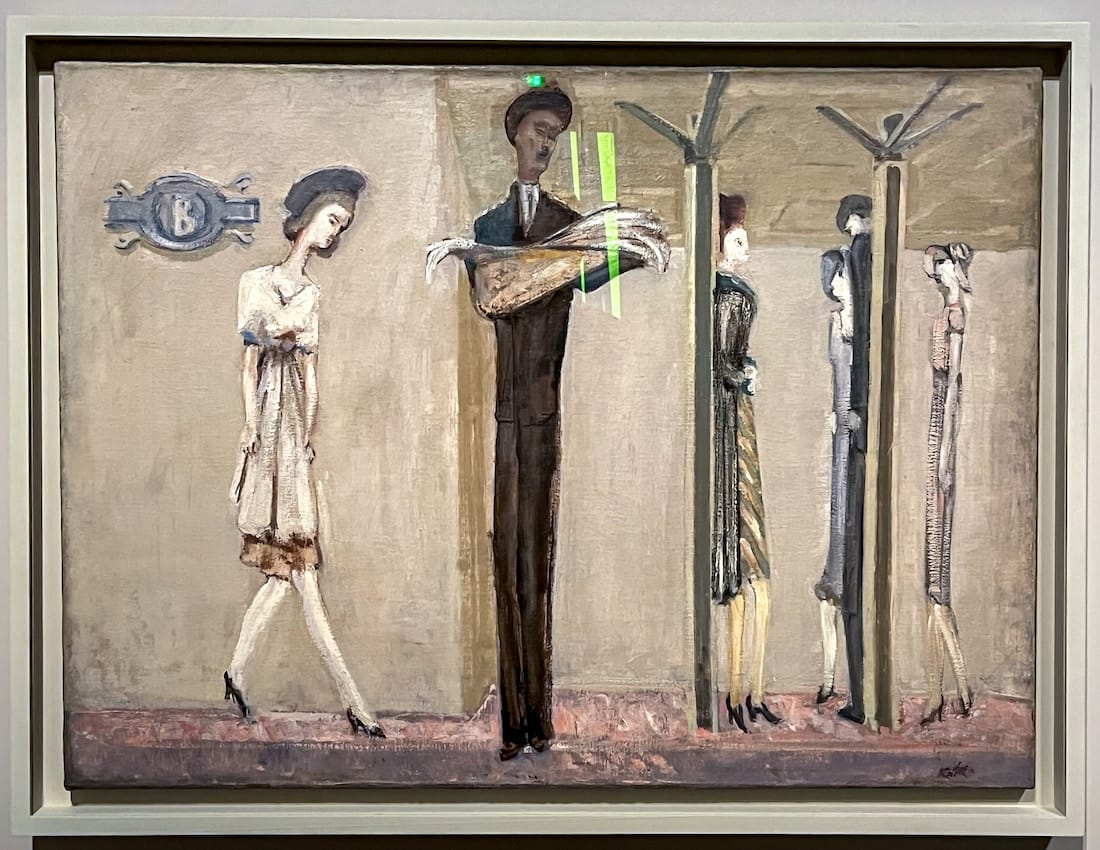
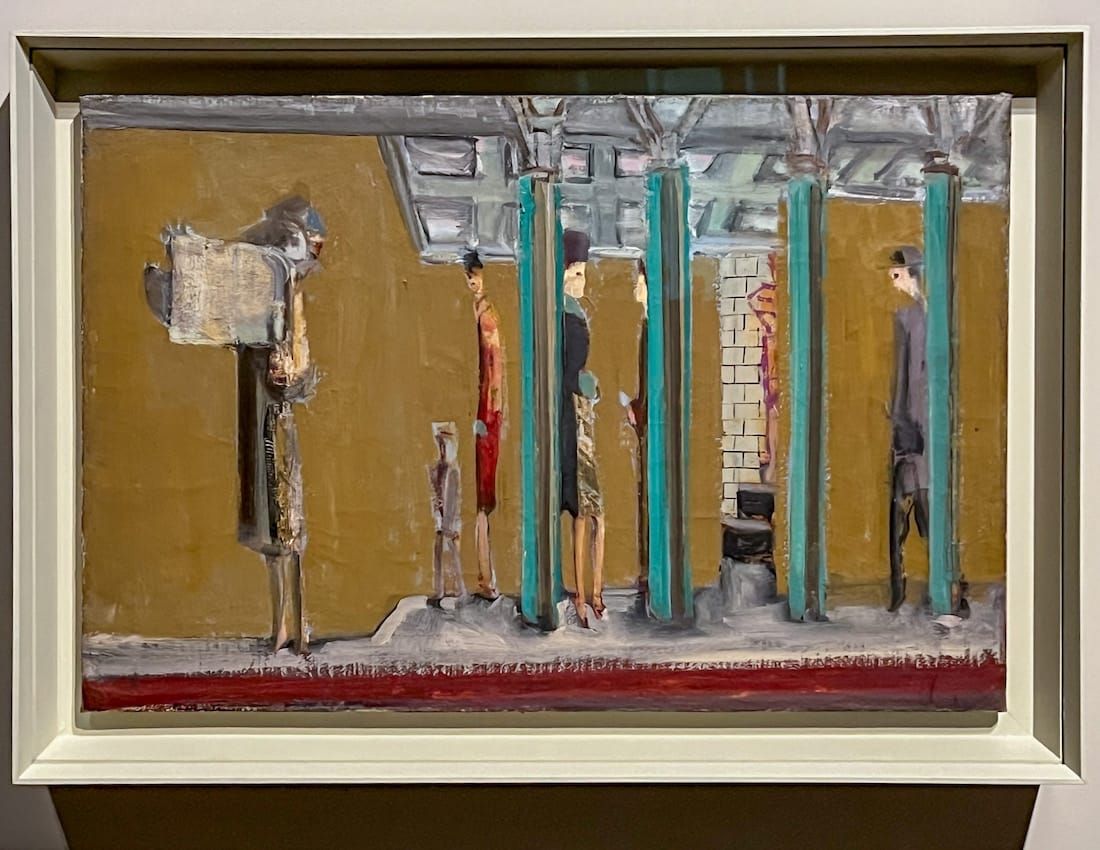
Mark Rothko, "Underground Fantasy" (c. 1940) (left) and "Untitled (subway)" (c. 1937) (right)
The exhibition opens with a series of subway paintings, which Rothko made in New York in the 1930s. To me these early works were a big surprise. Most if not all artists go through various stages before they find their own voice. Rothko’s subway paintings are by no means immature, they are in fact quite good. I can’t think of any other artist who has painted similar scenes.
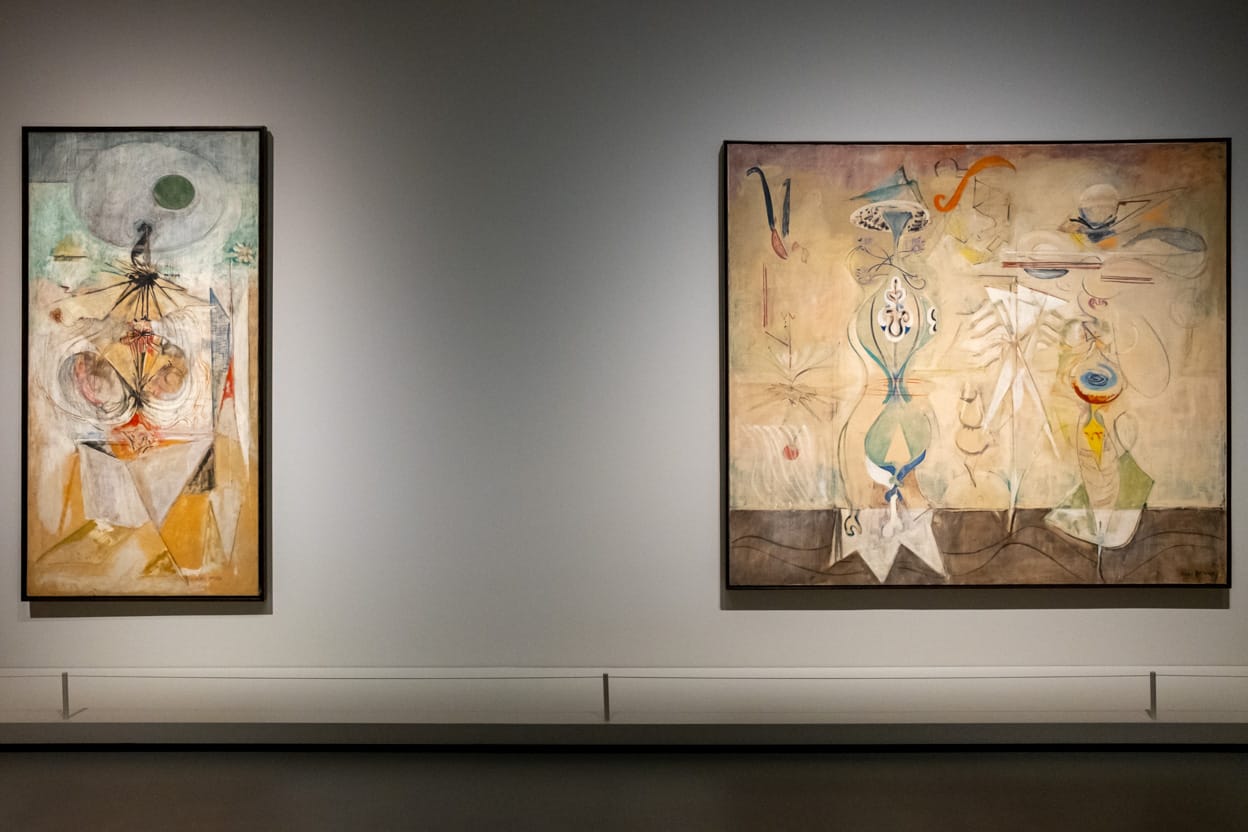
In the early 1940s, horrified by the onset of war and inspired by James Frazer’s study of mythology “The Golden Bough” and Nietzsche’s “The Birth of Tragedy”, Rothko’s work became increasingly symbolic, as he sought to create a new pictorial language to express the tragedy of the human condition. Drawing on ancient mythologies and totemic forms and inspired by the surrealists, some of whom had migrated from Europe to New York to flee the war, he filled his canvases with biomorphic forms. I don’t quite know what to think of these works. I’m afraid I would pass them over if I would see them in a group show.
By 1945 Rothko’s style had shifted away from surrealism and mythic imagery towards more abstract shapes. For the next few years he painted abstract compositions of asymmetrically arranged blocks of colour, which critics and art historians would later refer to as “Multiforms”. From 1949, Rothko began creating the paintings for which he would become known: large abstract canvases with two, three or four rectangular regions in shades of blue, white, red, yellow, ochre and black against a coloured background, with each painting suggesting a different atmosphere or mood.
I’ve always had an ambivalent relationship with the work of Mark Rothko. Some of his paintings leave me indifferent, whereas others I find absolutely magnificent and sublime in the true sense of the word, or rather, the sense given by Jean-François Lyotard in his essays on the sublime in art.
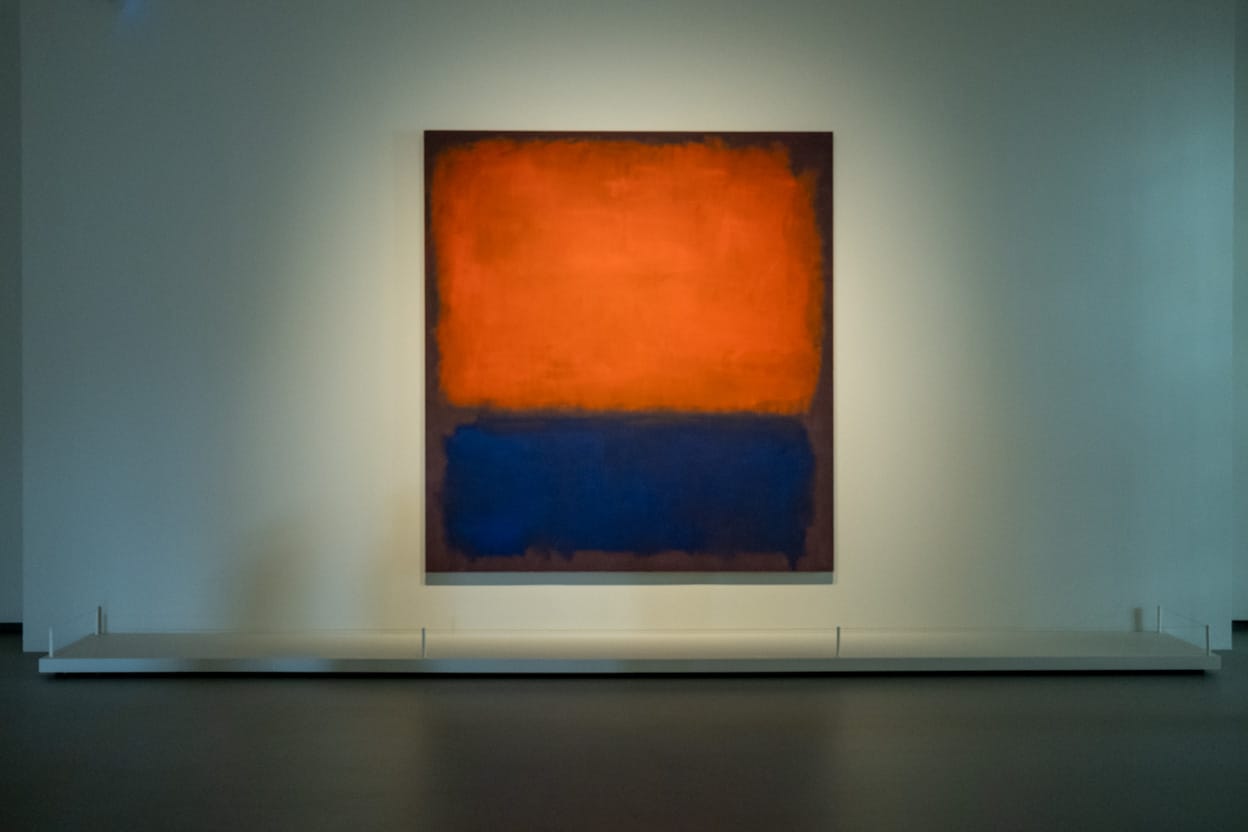
I guess it has something to do with colour. The early works in ochre, red, green and orange don’t do much for me, but “No. 9 (White and Black on Wine)” (1958), “No.1 (White and Red)” (1962) and “No. 14” (1960) are amazing. I was glad there was a wooden bench in front of “No. 14” so that I could sit down and contemplate it for a couple of minutes. I was also glad that I’d arrived early so that the rooms were still relatively quiet.
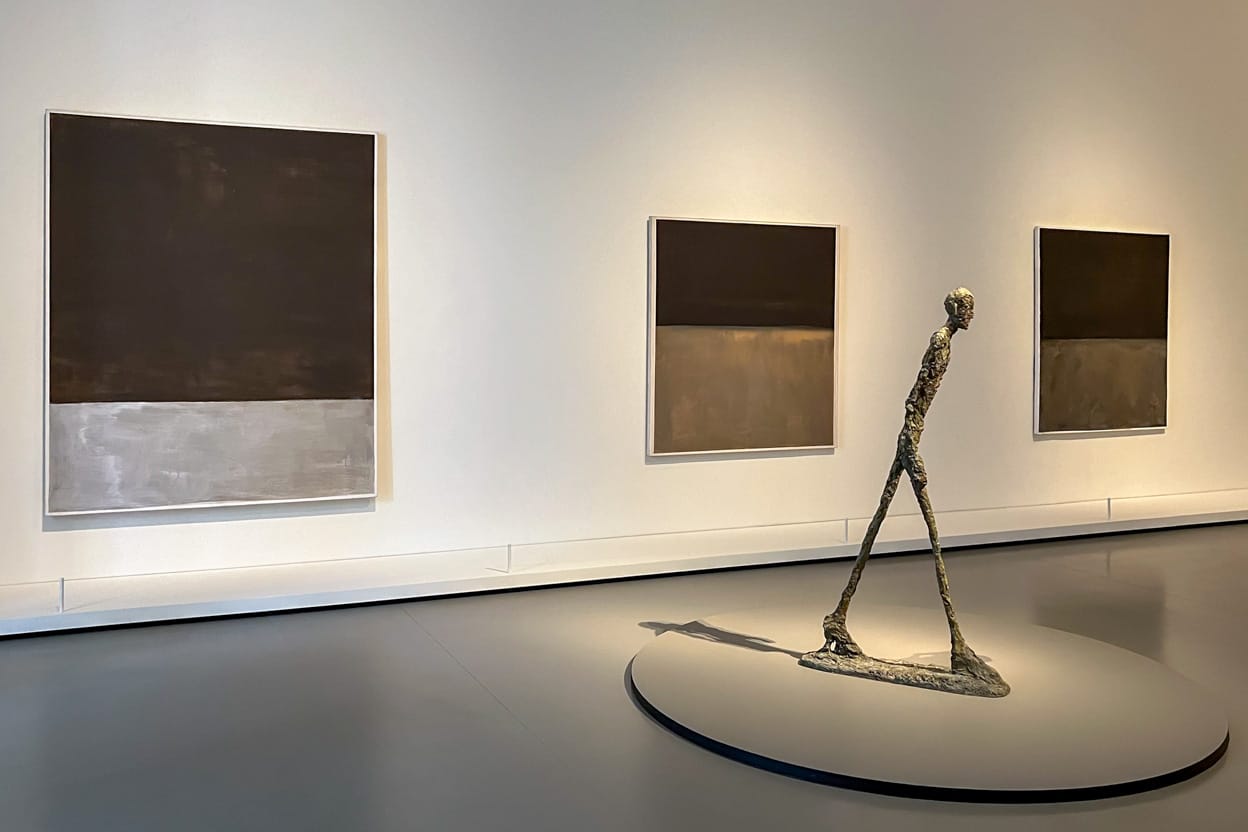
The exhibition ends with the Black and Gray series (1969-70), which mark a departure from Rothko’s work of the previous two decades. Each painting consists of two sections, a black rectangle in the upper area and a grey rectangle in the lower area. The works are paired with two sculptures by Giacometti, with whom Rothko felt an affinity and which works exceptionally well.
Rothko often said that he wanted as many of his paintings to be shown together so as to create an immersive environment. The retrospective currently at the Fondation Louis Vuitton would have been his dream come true.
Beware that the exhibition is hugely popular. It’s best to visit on a weekday early in the morning or late in the afternoon. It’s also best to arrive 15-30 minutes in advance of your time slot to secure a place at the front of the queue. And if you want to trace Rothko's development as an artist you should follow the chronological trajectory, which starts at the lower ground floor. If you want to have his best works to yourself you should arrive first thing in the morning and head straight for the top floor(s) and then make your way down.
Mark Rothko is at the Fondation Louis Vuitton, Paris until 2 April 2024.
PS: The colours in my stupid snapshots are way off. Besides, Rothko is one of those artists whose work needs to be seen IRL.